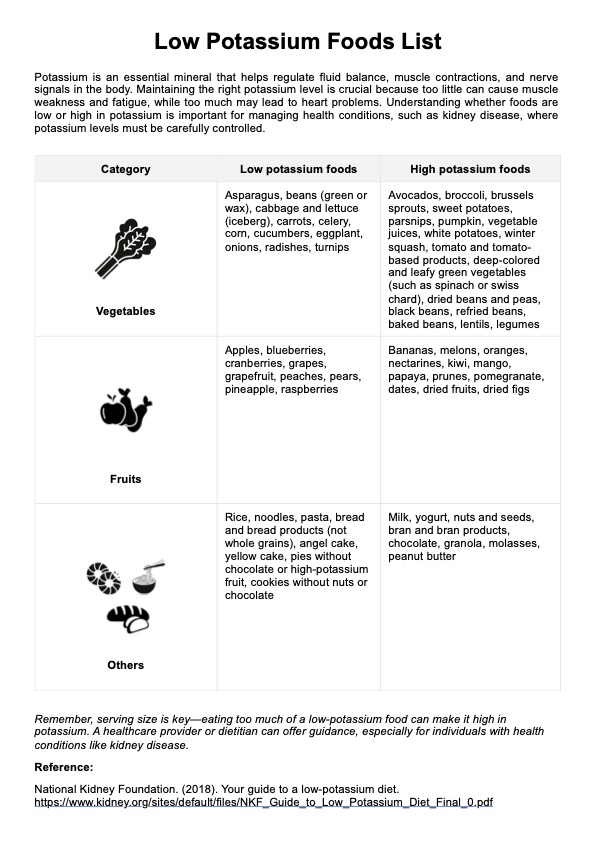Low-potassium foods include fruits like apples and grapes, vegetables such as carrots and cucumbers, refined grains, baked goods, and desserts without whole grains, chocolate, nuts, or high-potassium fruits.

Low Potassium Foods List
Ensure your patient with elevated potassium levels has a low potassium food list to manage their health and condition better.
Low Potassium Foods List Template
Commonly asked questions
Certain carbohydrates and starch-heavy foods, such as baked potatoes, rice, noodles, and pasta, are among the foods you can eat. However, fried potatoes, including French fries, must be avoided, and desserts containing chocolate, ice cream, or nuts should be avoided, as these items tend to be high in potassium.
An example of a low potassium meal could include 1 cup of raw vegetables like carrots or celery. If the vegetables are cooked, aim for 1/2 cup instead. Pair these with a lean protein source, such as grilled chicken or fish, and a serving of low potassium grains, like white rice or pasta, for a balanced and nutritious meal.
EHR and practice management software
Get started for free
*No credit card required
Free
$0/usd
Unlimited clients
Telehealth
1GB of storage
Client portal text
Automated billing and online payments











